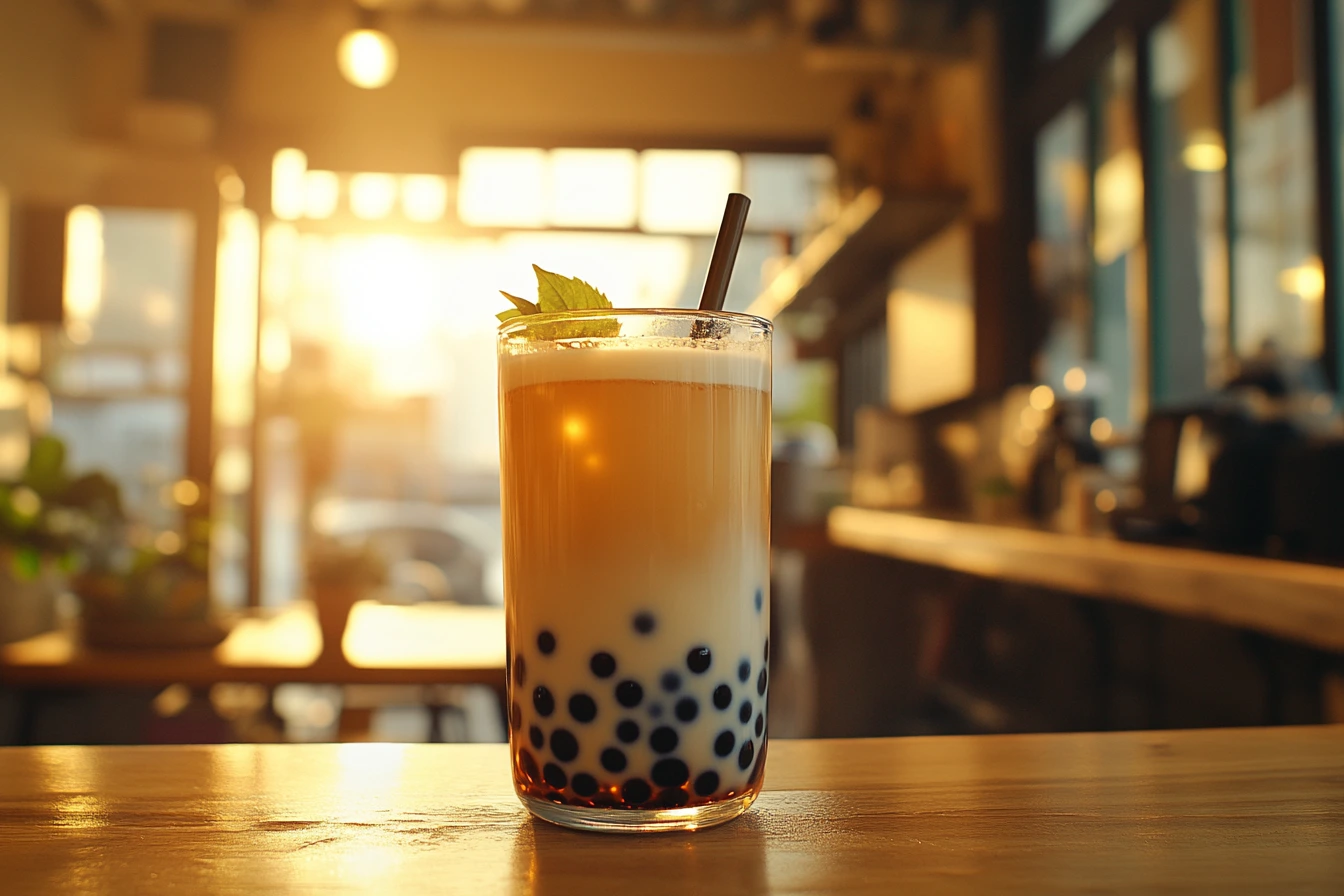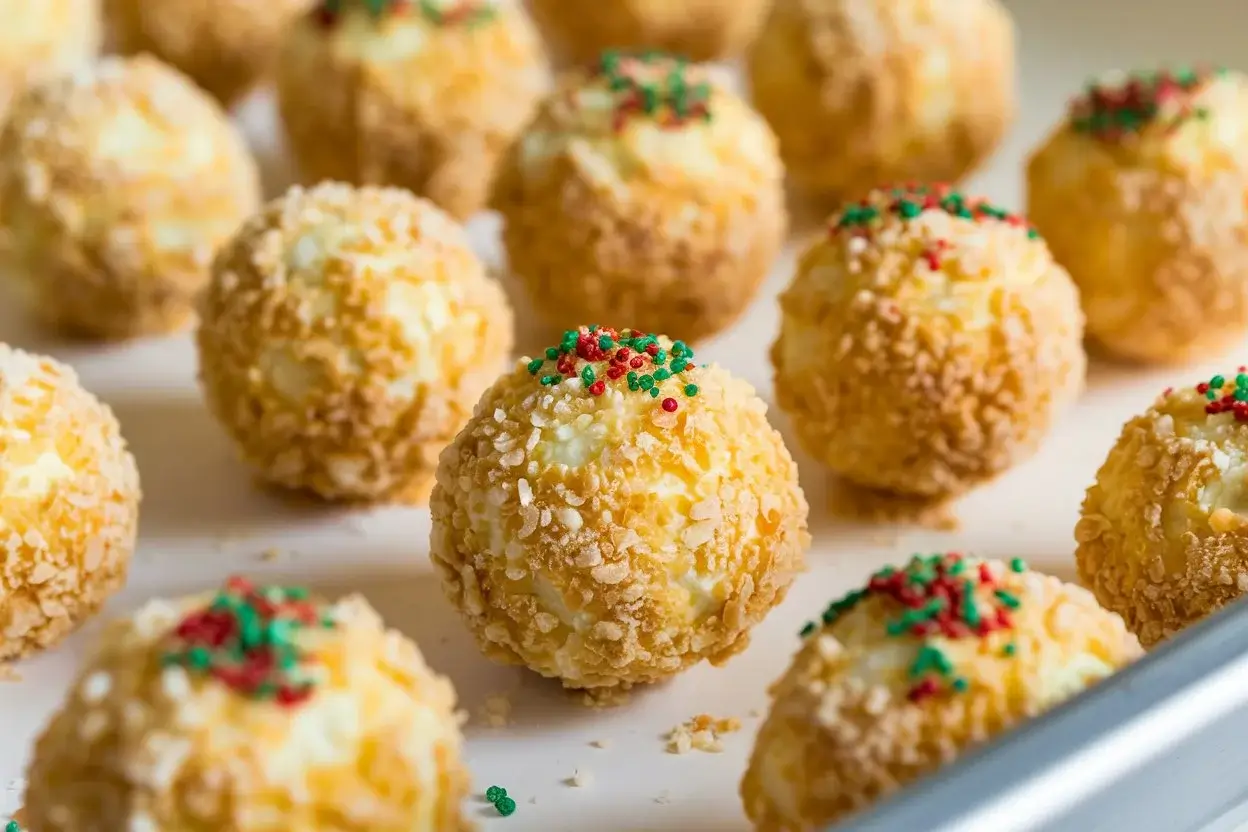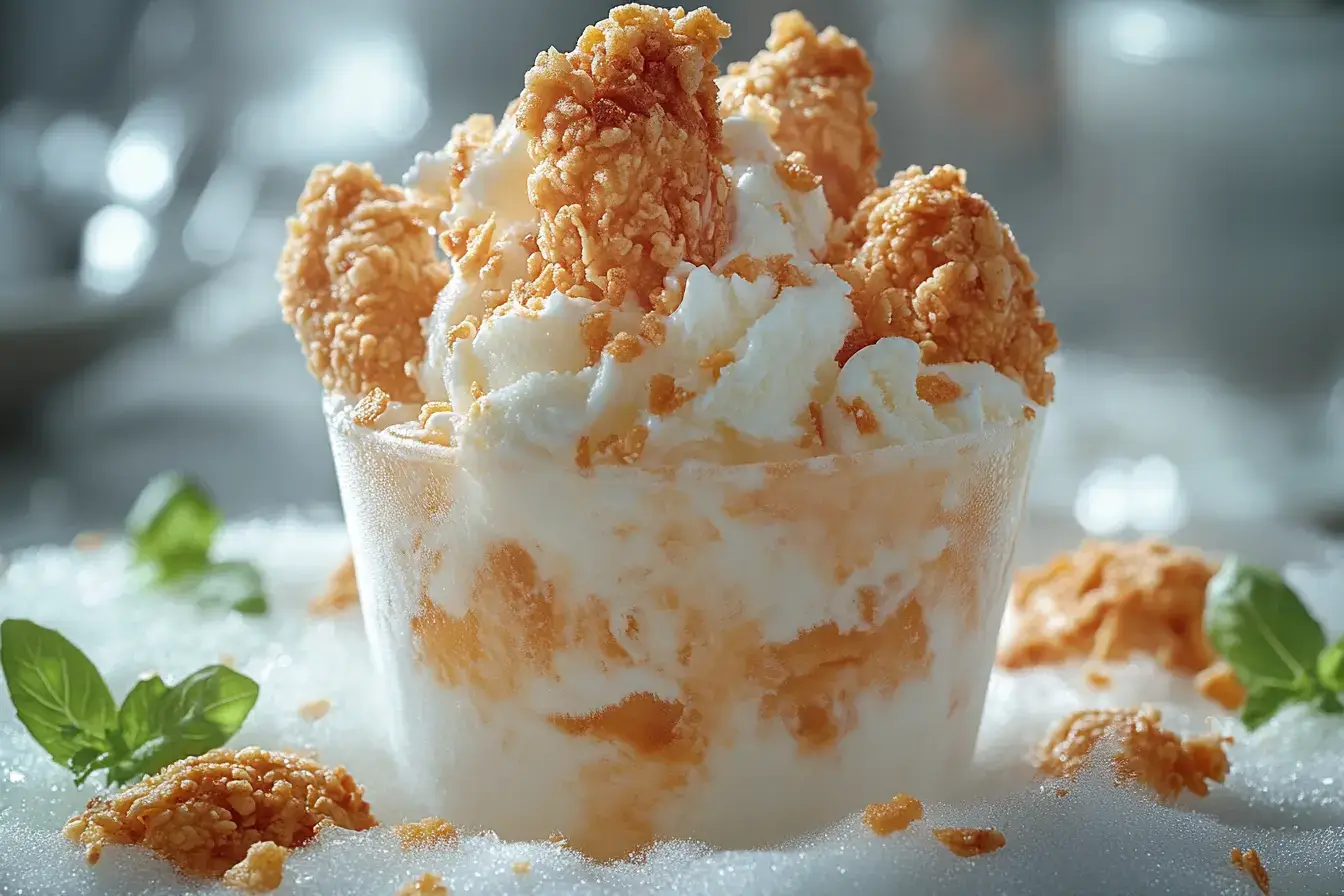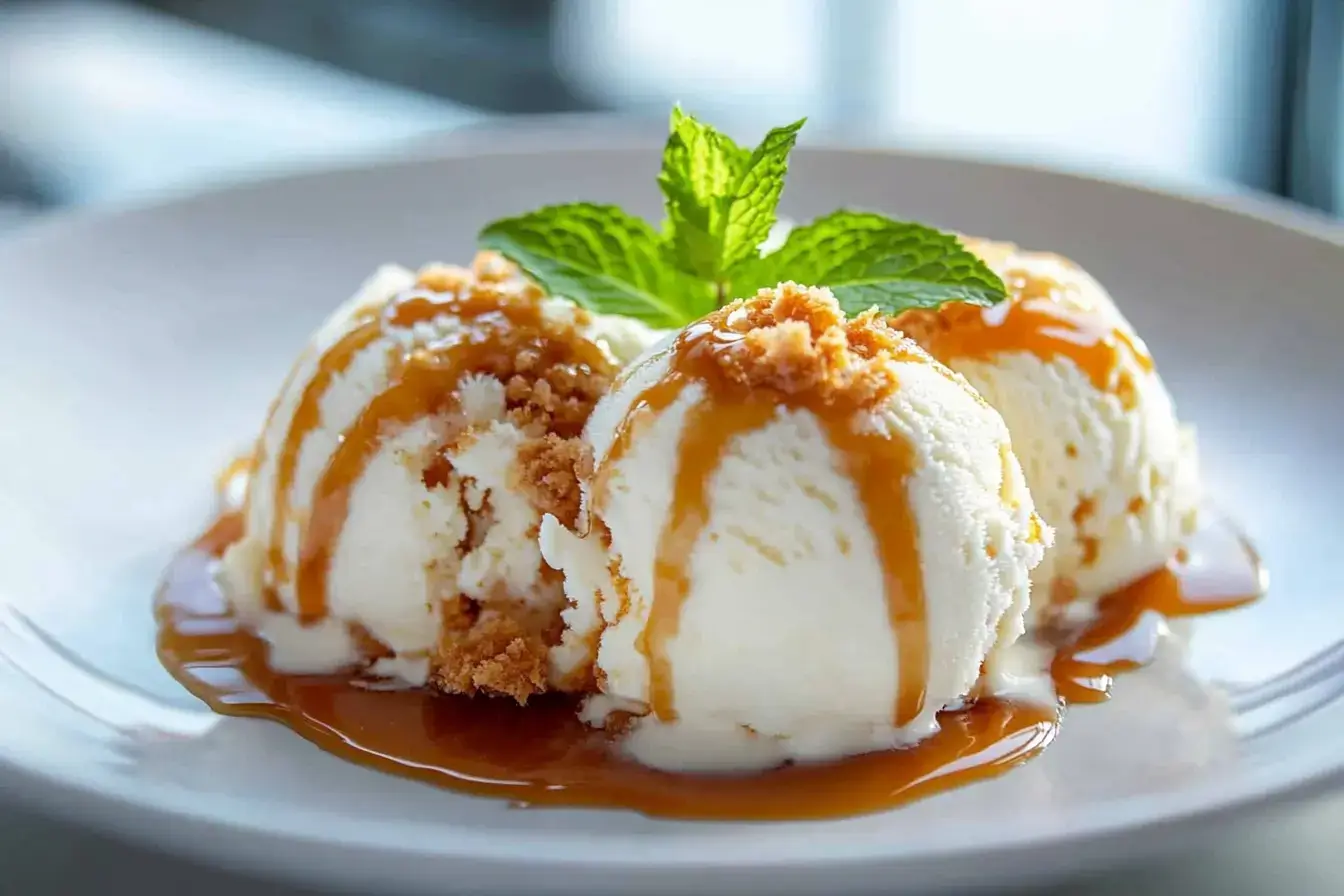What is the Meaning of Bobba? The Ultimate Guide to Bubble Tea
Now that we’ve cleared up what is the meaning of bobba, let’s move on to how you can make bubble tea at home. Whether you call it boba or bobba, the recipe remains the same, and it’s simpler than you might think.
Making bubble tea at home has become a popular activity for many fans of the drink. With more people looking to experiment with their beverages and recreate the bubble tea experience in the comfort of their kitchen, the process is straightforward and fun. All you need is the right ingredients and a bit of creativity. When people search for what is the meaning of bobba in the context of recipes, they are usually looking for guides to making this delicious drink at home. So, let’s get started with the basic recipe!
Ingredients for Boba (or Bobba) Tea
To make bubble tea at home, you’ll need the following ingredients:
- Tapioca pearls (boba): ½ cup
- Black tea leaves: 2 tablespoons (or tea bags)
- Water: 4 cups
- Milk: 1 cup (regular dairy milk or plant-based options like almond or oat milk)
- Sweetener: 2 tablespoons of sugar, honey, or your preferred sweetener
- Ice: Optional, for serving
The beauty of bubble tea lies in its versatility. The tea can be adjusted based on your taste, from traditional black tea to green tea, oolong, or even fruity teas. Additionally, you can use any milk you like, and the sweetness level is up to you. Whether you prefer a sugary kick or a low-sugar version, the ingredients can be tailored to your liking.
Step-by-Step Instructions for Making Boba (or Bobba) Tea
1. Cooking the Tapioca Pearls
- Boil 4 cups of water in a pot.
- Add ½ cup of tapioca pearls (boba) and stir to prevent clumping.
- Cook the pearls for 10-15 minutes until they become soft and chewy.
- Drain the pearls and transfer them to a bowl of cold water to stop the cooking process.
- Sweeten the pearls by mixing in 1 tablespoon of sugar or honey.
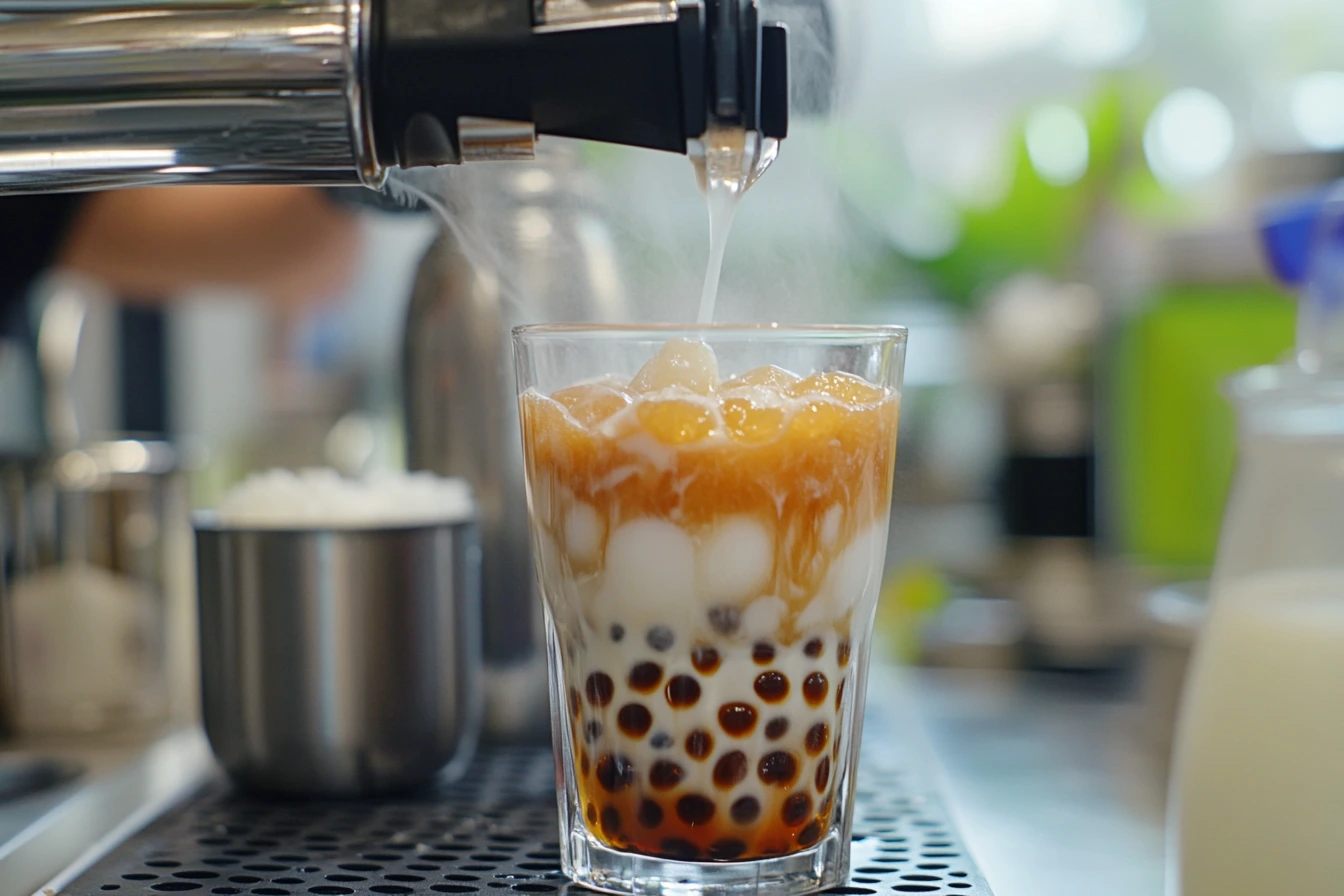
The chewy tapioca pearls are the star of any bubble tea. If you are wondering what is the meaning of bobba in the context of cooking, it’s the same process for preparing the tapioca pearls that give the drink its signature texture. The pearls must be boiled until they are perfectly chewy. Once cooked, they should be sweetened to add flavor and prevent them from hardening.
2. Brewing the Tea
- Boil 2 cups of water and add 2 tablespoons of black tea leaves (or use tea bags).
- Let the tea steep for 5-7 minutes.
- Strain the tea leaves or remove the tea bags and allow the tea to cool.
The tea base of your bubble tea can be customized to suit your preference. While black tea is the most common choice, you can opt for green tea, jasmine tea, or fruit teas for a unique twist. The key is to brew the tea strong enough to balance the sweetness and creaminess of the milk.
3. Preparing the Milk and Sweetener
- In a glass, mix the brewed tea with 1 cup of milk (dairy or plant-based).
- Stir in your preferred sweetener (sugar, honey, or syrup).
The milk-tea combination is what makes bubble tea so satisfying. Whether you go for whole milk or a non-dairy alternative like almond or coconut milk, the creamy texture pairs perfectly with the tea and tapioca pearls. Adjust the sweetness to your liking, making sure the flavors are balanced.
4. Assembling Your Bubble Tea
- Spoon a few tablespoons of sweetened tapioca pearls into the bottom of your glass.
- Pour the milk tea over the pearls.
- Add ice if desired, stir, and enjoy your homemade bubble tea with a wide straw.
Now comes the fun part—assembling your bubble tea! Place the tapioca pearls at the bottom of the glass, followed by the milk tea, and you’re ready to enjoy. The wide straw allows you to sip both the tea and pearls at the same time, giving you the full bubble tea experience.
Flavors of Bubble Tea: The Meaning of Bobba in Flavor Variations
Bubble tea comes in a variety of flavors, and each offers a unique twist on the classic drink. When people ask what is the meaning of bobba in different flavors, they’re simply curious about the options available.
One of the reasons bubble tea has become so popular is the endless possibilities for customization. From classic milk tea to exotic fruit flavors, bubble tea lovers can create their own personal favorite drink. Whether you prefer traditional or more modern options, the wide range of flavors ensures that there is something for everyone.
Classic Milk Tea: The Traditional Meaning of Bobba
The most iconic version of bubble tea is classic milk tea, made with black tea, milk, and chewy tapioca pearls. This version is often associated with the question what is the meaning of bobba, as it is the original bubble tea flavor.
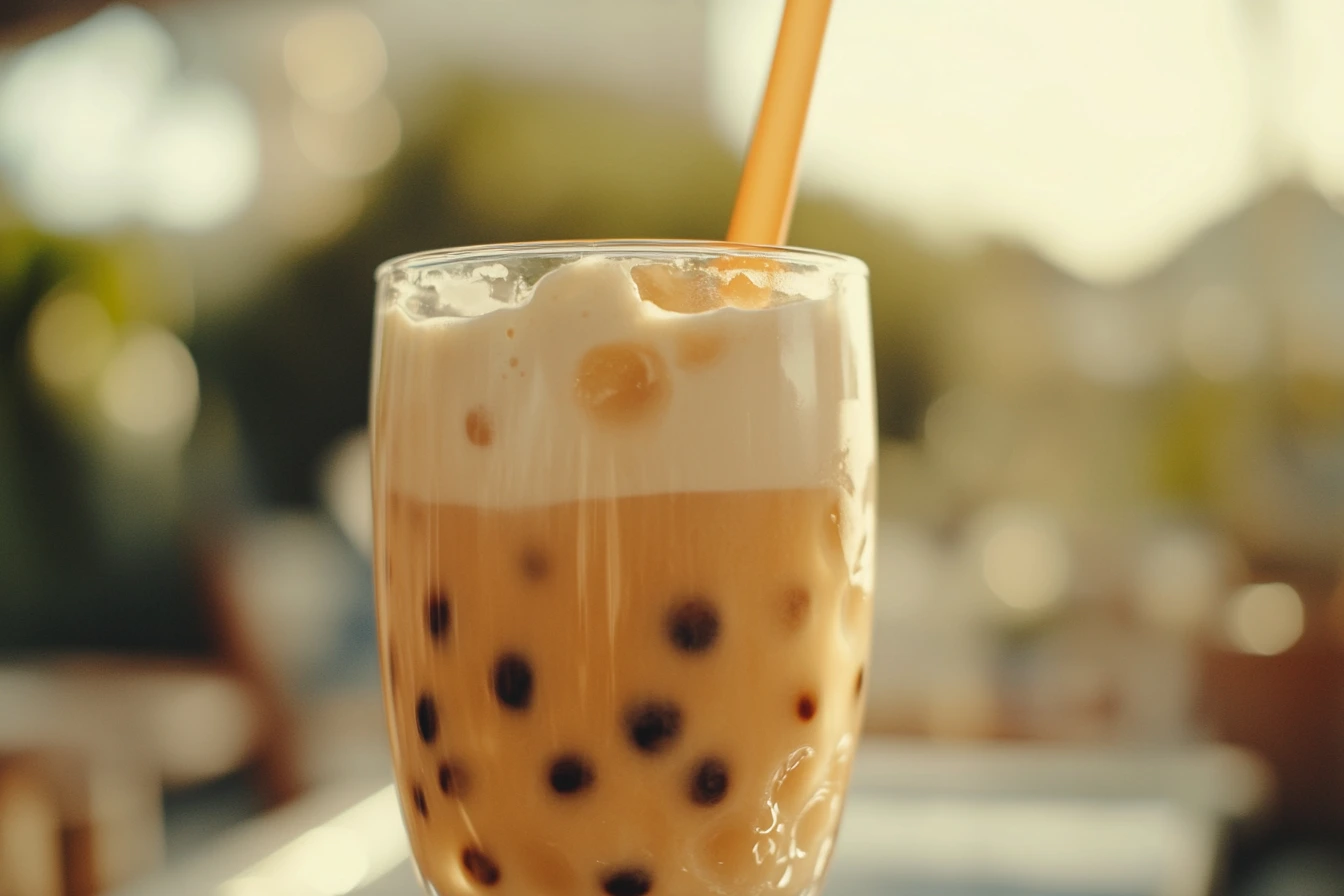
Classic milk tea continues to dominate bubble tea menus worldwide. Its rich, creamy taste is complemented by the strong black tea, creating a harmonious balance that appeals to many. The chewy tapioca pearls provide a fun texture, making it a drink that’s as satisfying to chew as it is to sip.
Matcha Green Tea: A Popular Bobba Variation
Matcha green tea has gained popularity for its health benefits and vibrant color. Made with finely ground green tea powder, matcha bubble tea offers a rich, earthy flavor that pairs beautifully with the chewy tapioca pearls.
The vibrant green color of matcha makes it a favorite on social media, and its strong, slightly bitter taste is balanced out by the sweetness of the milk and sugar. Matcha’s health benefits, including high levels of antioxidants, add to its appeal. What is the meaning of bobba in this context? It’s simply about embracing a modern twist on the classic bubble tea, using matcha as the base.
Taro Bubble Tea: A Fan Favorite
Taro bubble tea is another beloved option, known for its sweet, nutty flavor and striking purple color. When people ask what is the meaning of bobba in relation to taro tea, they’re referring to the same tapioca pearls, just in a different flavor context.
Taro, a starchy root vegetable, gives bubble tea a creamy texture and mild sweetness. Its pastel purple hue makes it visually appealing, and its subtle flavor is a hit with fans of dessert-like drinks. Taro bubble tea is particularly popular in Asia, though it has found a devoted following in other parts of the world as well.
Fruit-Based Bubble Teas: What Is the Meaning of Bobba in Fruity Flavors?
For those who prefer a fruitier twist, bubble tea shops offer flavors like mango, strawberry, and lychee. These fruit-based bubble teas are refreshing and often paired with popping boba or fruit jellies for added texture.
Fruit-based bubble teas are ideal for those who enjoy lighter, more refreshing flavors. These drinks typically skip the milk and instead feature fruit-infused teas or syrups mixed with tea and tapioca pearls. Popping boba, small balls filled with fruit juice, often accompany fruit-based bubble teas, adding bursts of flavor with every sip.
Health Benefits of Bubble Tea: What Is the Meaning of Bobba for Health?
For those wondering what is the meaning of bobba when it comes to health, it’s important to recognize both the benefits and potential drawbacks of bubble tea.
Bubble tea can be both a fun treat and a nutritious drink, depending on how you customize it. Many bubble tea lovers are now choosing healthier options by reducing the sugar content, opting for low-fat or plant-based milk, and experimenting with different tea bases like green or oolong tea.
The Antioxidants in Tea
Bubble tea’s tea base, whether it’s black, green, or oolong tea, is rich in antioxidants. These antioxidants can help reduce inflammation, improve heart health, and provide other wellness benefits. Green tea, in particular, is known for its high levels of EGCG, a powerful antioxidant.
Green and black teas are packed with antioxidants, particularly catechins, which can help combat oxidative stress in the body. Drinking bubble tea made with green tea can provide health benefits like enhanced metabolism and improved brain function. So, what is the meaning of bobba in this context? It’s about realizing that you can enjoy a delicious drink that also has potential health benefits.
Customizing for a Healthier Bubble Tea
Many traditional bubble teas contain high amounts of sugar, but you can easily customize the drink to make it healthier. By reducing the sugar content, opting for plant-based milk, and choosing smaller portions of tapioca pearls, you can enjoy a lighter version of bubble tea. Understanding what is the meaning of bobba in this context means being aware of how you customize the drink to fit your health needs.
Opting for natural sweeteners like honey or stevia can significantly lower the calorie content of your bubble tea. You can also choose unsweetened plant-based milks, such as almond, oat, or coconut milk, which offer fewer calories compared to traditional dairy milk. Additionally, cutting back on the number of tapioca pearls or using popping boba can help control your sugar intake.
Is Bubble Tea Gluten-Free?
Yes, bubble tea is naturally gluten-free, as tapioca pearls are made from cassava, a gluten-free root vegetable. However, always double-check the ingredients of any flavored jellies or syrups to ensure they don’t contain gluten.
For people with gluten sensitivity or celiac disease, bubble tea can be a safe option, provided you verify that all ingredients used are gluten-free. Tapioca pearls themselves contain no gluten, but be cautious of cross-contamination or flavored syrups that may have gluten-based additives. What is the meaning of bobba in a gluten-free diet? It simply means that you can enjoy this popular drink without worrying about gluten, as long as you choose the right toppings and ingredients.
Common Questions About Bubble Tea: Understanding What Is the Meaning of Bobba in FAQs
Even after understanding what is the meaning of bobba, people may still have questions about bubble tea. Here are some common FAQs to help clarify any remaining doubts.
As bubble tea grows in popularity, people often have questions about how to best enjoy the drink or how to recreate it at home. From concerns about the nutritional value to preparation tips, these frequently asked questions help shed light on what makes bubble tea so special.
Can I Make Bubble Tea Without Tapioca Pearls?
Yes! If you don’t have tapioca pearls on hand, you can use alternatives like popping boba, fruit jellies, or agar pearls. These substitutes provide a different texture but still deliver the fun and chewy experience that bubble tea is known for.
Although tapioca pearls are the traditional choice for bubble tea, many people are now experimenting with alternative toppings. Popping boba, which burst with fruit juice, or jellies made from coconut or agar, can add a unique texture to your bubble tea. Whether you’re avoiding tapioca or simply want to try something new, these options provide a refreshing twist.
How Long Can I Store Cooked Tapioca Pearls?
Cooked tapioca pearls taste best when eaten fresh, but you can store them in sugar syrup at room temperature for up to 4 hours. After that, the pearls may start to lose their chewy texture.
If you’re making bubble tea at home, it’s important to enjoy the tapioca pearls as soon as possible. After a few hours, the pearls may harden or become too soft, losing the ideal texture that makes bubble tea so enjoyable. It’s best to cook just the right amount for immediate consumption to ensure the pearls maintain their chewiness.
Is Bubble Tea Safe for Kids?
Yes, bubble tea is generally safe for kids, but you should be cautious with the chewy tapioca pearls, as they could pose a choking hazard for younger children. For kids, popping boba or fruit jellies may be a safer option.
Parents who want to treat their kids to bubble tea should be mindful of the potential choking risk posed by the chewy tapioca pearls. For younger children, swapping out the tapioca for fruit jellies or popping boba can offer a safer and still enjoyable bubble tea experience.
The Future of Boba: What Is the Meaning of Bobba in Emerging Trends?
As bubble tea continues to evolve, new trends are constantly emerging. So, what is the meaning of bobba in terms of future innovations?

Bubble tea’s popularity shows no signs of slowing down. In fact, the drink has entered an exciting new era, with innovation driving the creation of bold new flavors, healthier options, and sustainable practices. Whether it’s experimenting with unusual ingredients or adopting eco-friendly initiatives, bubble tea shops are at the forefront of change.
Sustainability in Bubble Tea
Many bubble tea shops are adopting sustainable practices, such as offering reusable cups, biodegradable straws, and organic ingredients. As consumers become more environmentally conscious, these practices are likely to expand.
Sustainability has become a major focus for many bubble tea shops. From reducing plastic waste by offering reusable straws to sourcing local and organic ingredients, the future of bubble tea is moving toward eco-consciousness. As more consumers seek out environmentally friendly options, bubble tea businesses are responding by implementing greener practices.
Healthier Bubble Tea Options
With more people focusing on health and wellness, bubble tea shops are introducing low-sugar and sugar-free options. These versions often use alternative sweeteners like stevia or monk fruit and offer plant-based milk alternatives.
Health-conscious consumers are driving a shift toward lighter, more nutritious bubble tea options. Many shops are now offering low-calorie and sugar-free versions, along with plant-based milks and reduced-sugar tapioca pearls. As a result, bubble tea is becoming a guilt-free indulgence for those watching their sugar intake or seeking healthier alternatives.
Creative Toppings and Flavors: What Is the Meaning of Bobba in New Ingredients?
Bubble tea continues to push boundaries with new toppings and flavors. Expect to see more creative options like cheese foam, mochi, and even edible glitter in future bubble tea menus.
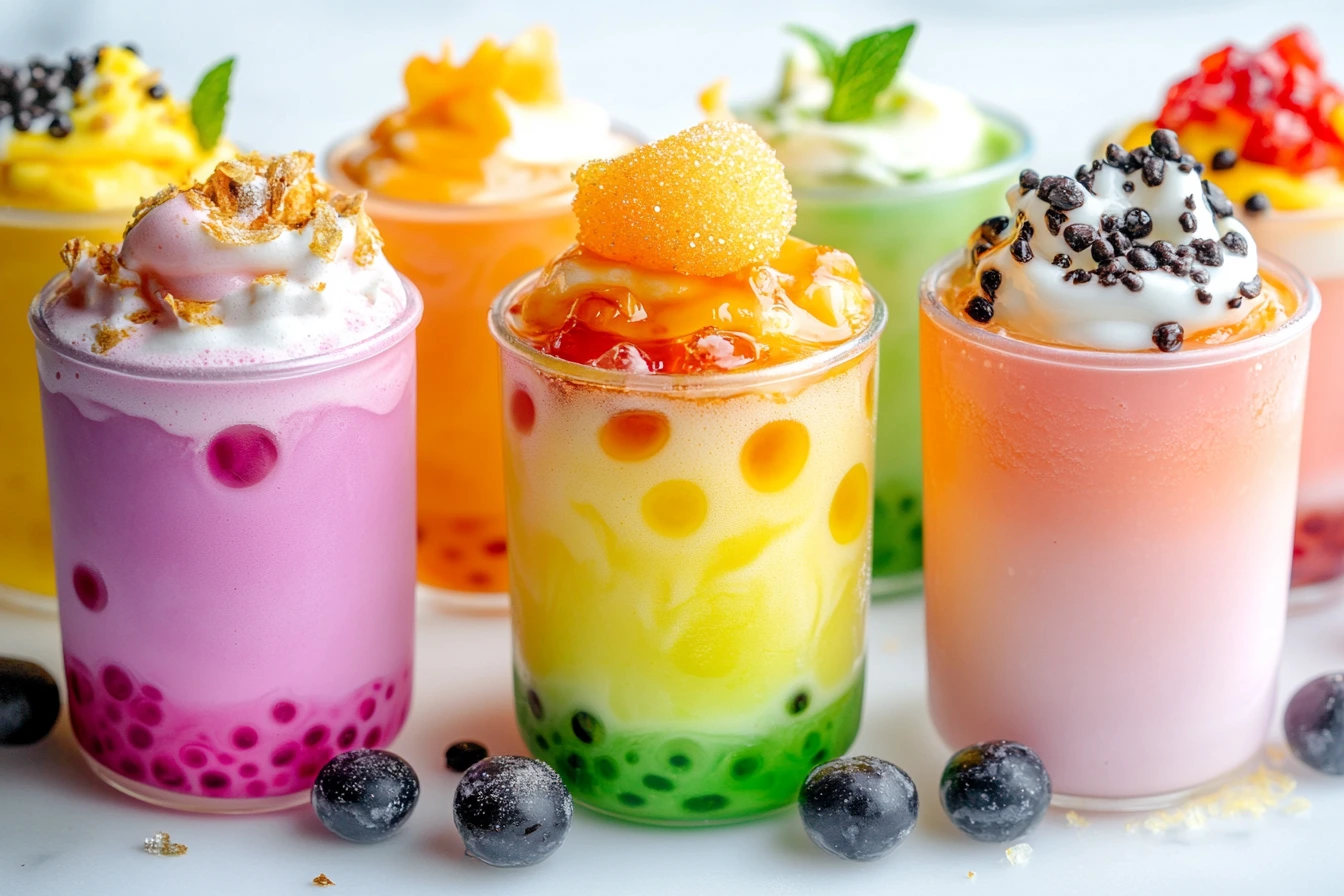
As bubble tea continues to innovate, new toppings and ingredients are gaining popularity. Cheese foam, a creamy, slightly salty topping, has become a favorite addition in many regions. Mochi, a chewy rice cake, also adds an extra layer of texture to bubble tea drinks. Edible glitter is another fun, aesthetic twist that transforms bubble tea into a visual masterpiece. What is the meaning of bobba in this new era? It’s about embracing the creativity and constant reinvention that keeps bubble tea exciting and fresh.
Conclusion: What Is the Meaning of Bobba?
In conclusion, what is the meaning of bobba is a straightforward question with a simple answer: bobba is a common misspelling of boba. While both terms may be used casually, boba is the correct term for the Taiwanese drink that has taken the world by storm. Now that you know what is the meaning of bobba, you can confidently use the right term when ordering or making your own bubble tea.
Whether you prefer classic milk tea or like to experiment with fruit-based flavors, bubble tea—boba, not bobba—offers endless possibilities. So grab a wide straw, take a sip, and share your love for bubble tea with friends and family!


